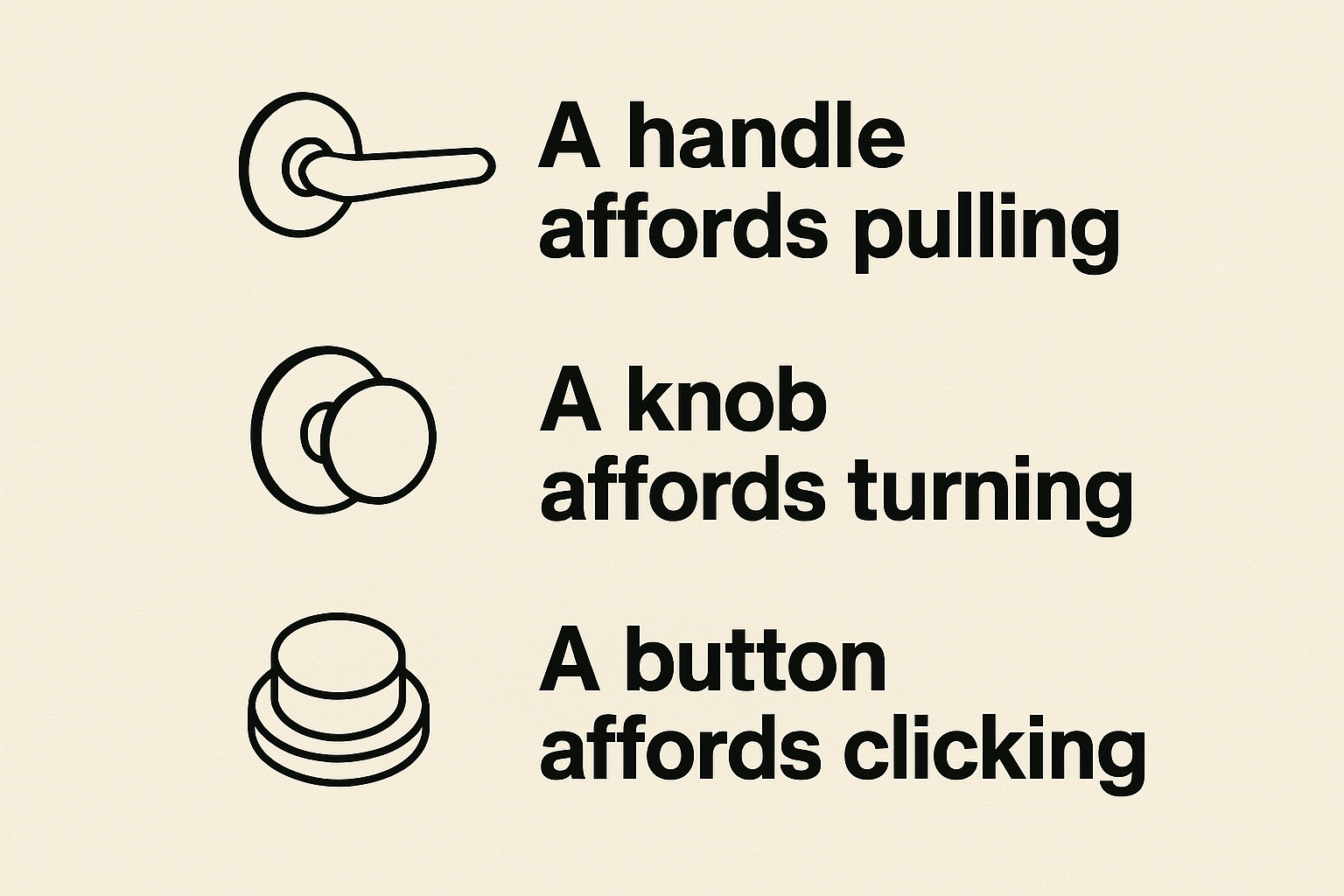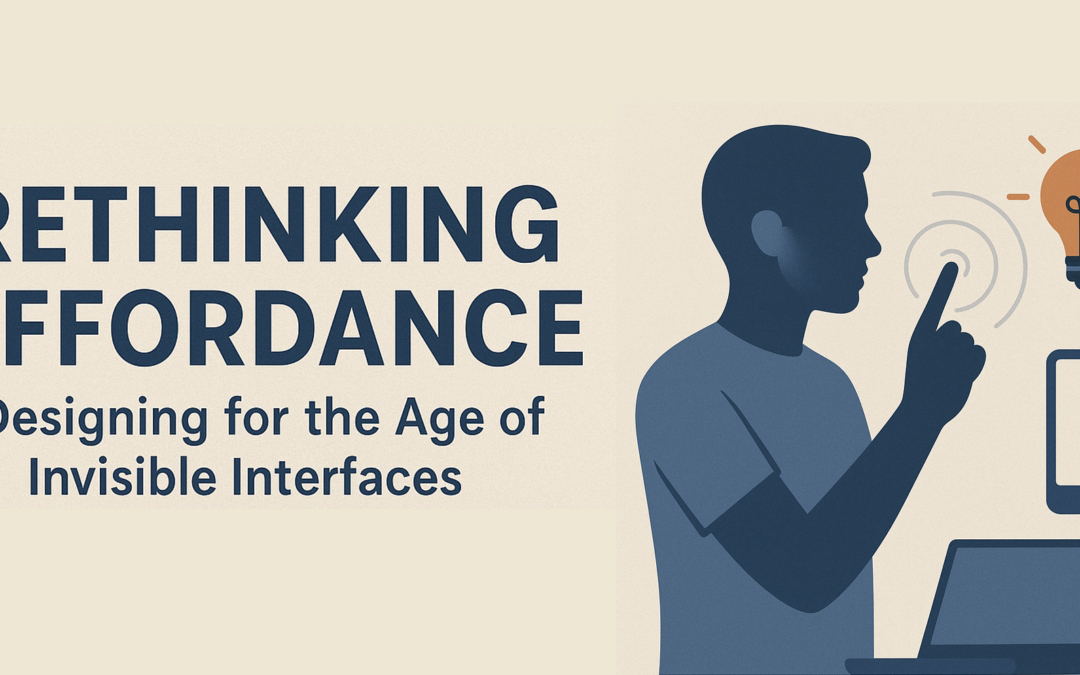For decades, affordance has been a core principle in UX design. A button looks tappable, a slider invites dragging, a text field signals typing. These visual cues help users understand what they can do without needing instructions.
But in 2025, the digital landscape is shifting. We’re now designing for voice commands, gesture controls, AI agents, augmented reality (AR), and context-aware systems. Many of these interfaces are invisible — there are no buttons, no borders, and sometimes, no screen at all.
So the question is:
What does affordance look like when there’s nothing to look at?
What Is Affordance, Really?
In design, affordance refers to the qualities of an object that suggest how it should be used. For example:
- A handle affords pulling
- A knob affords turning
- A button affords clicking
Great UX uses affordances both perceived (what the user thinks they can do) and real (what the system allows) to make interfaces intuitive and frictionless.

Great UX uses affordances, both perceived (what the user thinks they can do) and real (what the system allows) — to make interfaces intuitive and frictionless. Read More →

